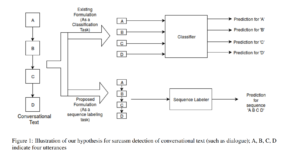- Bond, Robert M., et al. “A 61-million-person experiment in social influence and political mobilization.” Nature 489.7415 (2012): 295.
- Kramer, Adam DI, Jamie E. Guillory, and Jeffrey T. Hancock. “Experimental evidence of massive-scale emotional contagion through social networks.” Proceedings of the National Academy of Sciences (2014): 201320040.
Summary:
The two papers talk about how people are influenced and how this influence spreads through the online social networks that people build. The experiments were focused on Facebook and the network of friends that people build. The first paper tracks the influence of a banner that promoted voting in the election, with and without showing who else stated that they voted. The second paper tracks how the user’s emotions are influenced based on the sentiments represented in the news feed.
Reflection:
The whole contagion effect on Facebook influencing people to vote parallels real life unconscious social pressures. For example, I noticed the social pressure affecting me when I felt compelled to buy clothes emblazoned with the VT logo because that is what I see everyone wearing around me. The compulsion to be conforming is extremely strong in humans. So it is not surprising that one is more likely to vote when they are explicitly made aware that people around them, people they know, have voted.
The two experiments make me wonder how much further people can be manipulated in their thoughts and actions, via social media. If you can also manipulate buying habits, advertisers now have a fantastic new weapon. If you can manipulate human thought and initiative, rogue governments now have a fantastic new weapon. This isn’t something that may happen in the far off future either. Oh no! This is something that is happening now. The most extreme example is the massacre and desolation of the Rohingya people in Myanmar. The hatred for these people is being perpetuated through social media, with support from the government (though they would deny such thing). You can spark good effects like getting people to vote through contagion, but remember that this also exists.
We cannot escape talking about the ethical issues surrounding the emotional contagion experiment, especially considering the outrage that it sparked when people were made aware that it happened. I wondered why the emotional contagion paper struck me as something I’d heard about before. Then I realized that I’d read about it in the news and the huge controversy that it caused. One has to ask, is it really informed consent when people are conditioned over the years to simply check the ‘I agree’ box on the terms of service without reading bothering to read it (because who wants to read several pages of impenetrable legal language)? I have to question the researchers’ reasoning that people consented to the experiment. It is a well known fact that in 99.9% of the cases, people don’t read the terms of service. Even if the researchers were unaware of this fact, the problem remains that informed consent did not exist (because few users read the terms of service), so this experiment could be classified as unethical and wrong. The experiment’s results rested on the users not being aware that the experiment is taking place. But it does seem like the user’s choice was taken away from them, which is most certainly not a good standard to set, especially by someone as big and influential as Facebook. Then again, Facebook isn’t exactly a paragon of ethics so I don’t think they care either way.

